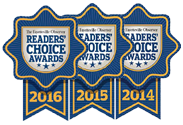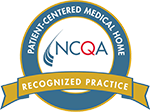Preventing Poisoning in Children
Raising happy and healthy children is a goal we all want to attain. But children get into things they shouldn’t, which can sometimes cause great injury. According to the Centers for Disease Control, over 300 children in the U.S. ages 0 to 19 are treated in an emergency department every day, two of which die, as a result of being poisoned. In an effort to help you make your home an even safer place, we have put together some poison prevention tips as well as what to do in the event your child is poisoned.
Poison Prevention Tips
Nine out of ten poisonings happen at home. Children are naturally curious and therefore it is important to store all household products out of a child’s sight and reach. Most household cleaners are stored under the kitchen sink. This however, puts dangerous chemicals eye-level with your child. Instead, store all cleaning products out of children’s reach and under lock when possible. Even dishwashing or clothes washing pods are interesting-looking to young eyes. Keep the temptation at bay by storing these items away from curious kids. Never put cleaning products in containers that were once used for food. Here are some more tips to keep a safe home.
- Store all medications, including vitamins out of the reach and sight of children. Keep all prescriptions and medications in their original packaging and try to keep record of how many pills remain in prescriptions.
- Personal care products such as make-up, perfume, rubbing alcohol, nail polish and facial products should also be stored where children cannot access them.
- Yard chemicals, including plant food, fertilizers, insecticides, etc. should be locked or stored out of the reach of children.
- Art supplies, such as paint and glue can be very hazardous to children. Keep these supplies in a place that little hands cannot reach.
- Do not use roach or rat poison on the floors of your home.
- Do not leave alcoholic drinks where kids can reach them. Keep bottles of alcohol locked in a cabinet that is out of the reach of children.
- Take an inventory of the plants you have in your home and yard. Notate which plants can be poisonous if ingested and keep them away from children. Some common plants that are toxic include Azalea, English ivy, Rhododendron and Holly.
- Check your home for lead-based paint. This can be found in cribs, highchairs, painted toys, or toy chests that were made before 1978. It may also be found in older homes. For more information on lead poisoning, call the National Lead Information Center at (800) 424-LEAD (5323).
- Keep the phone number for poison control (800-222-1222) as well as your pediatrician’s phone number near the phone.
When Poisoning is Suspected
Signs and Symptoms
- Drowsiness
- Difficulty breathing
- Severe throat pain
- Convulsions
- Sudden change in behavior
- Unusual odor
- Vomiting
- Confusion
- Pill fragments found (be sure to keep sample)
- Excessive drooling
What to do
If poisoning is suspected, it is important to call your local poison control center immediately at 800-222-1222.
It is vital to contact 911 if your child has ingested poison and has a change in mental state. Be sure to bring the container of the item that was ingested. Do not give a child ipecac.
If you have additional questions or concerns about poison prevention, please call our office at (910) 486-5437.







